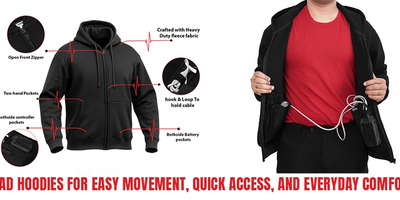
LVAD Wire Infection Risks: What Every Patient Should Know
LVAD or Left Ventricular Assistive Device is a life-saving device that helps people with a weak heart. When a patient has severe heart failure and cannot pump blood efficiently, it can severely affect the quality of life of the patient. After having an LVAD, you may feel relief from the symptoms, which can help you to live independently until you get a transplanted heart from a suitable donor. An LVAD is an efficient device to pump blood from the left ventricle and supply it to each organ in the body so that they can function properly. Your doctor may perform an LVAD implantation either as a permanent treatment or to get a heart transplant.
Although LVAD is effective in improving symptoms of heart failure, it is also associated with some risks and complications that every patient should know. One of the major risks is an LVAD wire infection, but luckily, there are some ways you can prevent it. Let’s talk about this in detail so that you can have a beginner’s guide to LVAD risk prevention.
Components of an LVAD:
Before knowing about the LVAD wire infection, you should know the components of LVAD completely so that you can manage it more effectively. LVAD consists of both external and internal components. Internal components include the LVAD pump, and the external components include drivelines, controller, and batteries. The driveline connects the external controller to the internal pump, and the batteries are the power source. The controller manages the pump and also alerts the user with alarms or vibration if it is not working properly.
What is an LVAD Wire?
An LVAD wire is one of the most delicate components of the LVAD heart device. LVAD wire is just another name for driveline, which connects the internal LVAD pump to the external components of LVAD. The LVAD wire or driveline exits the body through a skin opening in the abdominal wall. It is a sensitive component because it is a source to provide power to the pump, and also monitors the device's functioning continuously.
Why Is the LVAD Wire a Source of Infection Risk?
LVAD wire or driveline is the only component that exits the body. Your doctor creates a permanent opening through the skin to make a way for the driveline. Because it is an opening, it becomes a vulnerable site for opportunistic bacteria to enter and cause infection. Driveline or LVAD wire infection is one of the most common complications that occur after LVAD implantation.
With the right approach of proper care and medication use after LVAD surgery, you can significantly reduce the chances of infection. You may also need to have some knowledge about the risks that can cause infection. Some of these include:
-
Poor hygiene at the exit site
-
Improper dressing changes
-
Physical trauma to the wire
-
Tugging on the wire
-
High humidity or sweating near the site
-
Not wearing proper LVAD clothing to provide safety to the driveline
How to Prevent LVAD Driveline Infections?
It is true that your LVAD wire can catch an infection, but luckily, there are some ways you can prevent it. Because we all know that prevention is better than a cure. Here is a guide for you on how LVAD users and their caregivers can significantly reduce the risks by just following the set of instructions:
-
Take prescribed medications and attend follow-ups
-
Clean the exit site daily with an antiseptic solution according to your doctor’s instructions
-
Use sterile dressing materials and learn proper methods of dressing
-
Change your dressing in a clean environment
-
Avoid tugging or bending the driveline during any activity
-
Secure the wire using an LVAD vest and belt
-
Avoid going to swimming pools or hot tubs
-
Do not soak the driveline site in any situation
-
Dry sweat and take extra care during humid weather
How does LVAD gear reduce infection risk?
Premium-quality LVAD clothing like driveline covers, LVAD vests, LVAD shirts, and LVAD bags protects the device and also creates a physical barrier between the LVAD wire exit site and the external environment. It helps in reducing the exposure to bacteria that can cause infection.
One of the leading causes of infection is skin damage due to excessive driveline tugging or movement. So, with proper LVAD gear, you can not only secure the driveline in place but also prevent unnecessary movement. LVAD apparel is perfectly designed to accommodate controllers, batteries, and wires during daily activities and reduces accidental drops and pulls. This is why it is important to wear LVAD-specific clothing.
Signs of an LVAD Wire Infection:
Although you can prevent infection, you must know the signs of an LVAD wire infection. Beware of the signs of infection and immediately report to your doctor if you see any of the following signs:
-
Redness or swelling around the exit site
-
Drainage or foul odor
-
Pain or tenderness
-
Fever or chills
-
General fatigue
If any of these symptoms appear, consult with your doctor so that they can limit the infection's spread without causing any severe complications.
How Are LVAD Wire Infections Treated?
Your doctor will plan a treatment according to the severity of the condition. There is no single method that can treat all patients, even with the same disease. However, treatment is more effective if the infection is diagnosed in its initial phase. Some of the treatment methods are mentioned below:
-
Mild infections may be treated with oral antibiotics and improved dressing care.
-
Severe infections may require hospitalization, IV antibiotics, or even surgical intervention.
-
In extreme cases, replacement of the LVAD might be necessary.
What Would Happen If You Cut an LVAD Wire?
Cutting an LVAD wire is extremely dangerous and life-threatening. If the driveline or LVAD wire is damaged, the LVAD pump will stop working. This means your circulation will be compromised, and in severe cases of heart failure, your heart will stop pumping blood.
In cases where the heart becomes so weak that it cannot pump blood, the patient can go into cardiac shock, which is a life-threatening situation. You must have a backup system for your patient; otherwise, death may occur. Immediately contact your LVAD center and inform your doctor about the situation so that he can have emergency medical care prepared. In some situations, patients carry backup batteries and controllers, but these only work if the connection is not physically damaged. Never attempt to disconnect or modify the LVAD wire on your own if the LVAD pump stops working.
Final Thoughts
While an LVAD can greatly improve the quality of life for those with severe heart failure, it is essential to understand LVAD device benefits and risks. Every patient should know how to manage the risks associated with the LVAD wire, especially the possibility of infections. By following proper care instructions and maintaining good hygiene, patients can significantly reduce the risk of infection. Always be aware of the signs of an infection and report them to your doctor quickly. With careful management and regular follow-ups, patients can enjoy the benefits of their LVAD while minimizing complications.
Prev post

How long can you live with an LVAD?
Updated on 30 May 2025
Next post

What Are the Challenges in Designing Artificial Hearts?
Updated on 27 May 2025








